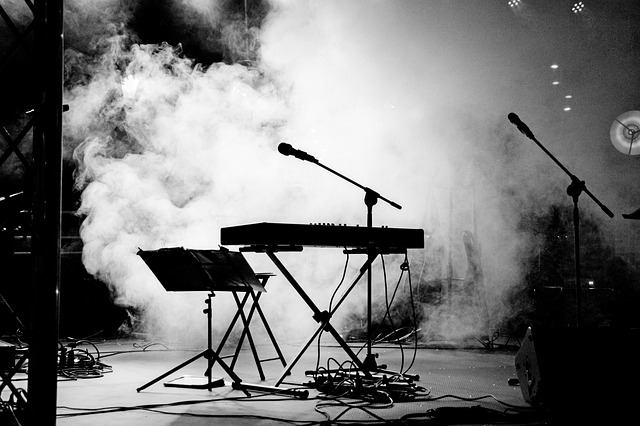Live performances have long been a cornerstone of human culture, offering a shared experience that transcends geography and background. In the past decade, the landscape of the concert experience has begun to shift dramatically, driven by advances in digital technology, changes in consumer behavior, and evolving expectations around sustainability and accessibility. While the core of a concert—music, energy, and connection—remains unchanged, the ways audiences engage with and attend events are rapidly evolving. This article explores the most significant trends shaping the future of live concerts, from virtual reality to eco‑friendly production practices, and considers how the entertainment industry can adapt to meet the demands of a new generation of listeners.
Technological Innovations Reshaping the Concert Experience
The integration of emerging technologies into the concert ecosystem has opened up possibilities that were once the stuff of science fiction. Three key areas are particularly transformative:
- High‑Definition Streaming and 4K Live Feeds – Fans can now stream concerts from the comfort of their homes at resolutions that rival professional cinema standards, making remote attendance a viable alternative to physical presence.
- Augmented Reality (AR) and Mixed Reality (MR) – AR overlays can project holographic set pieces or interactive visual elements onto the audience’s environment, while MR systems enable shared virtual spaces where attendees can mingle even when geographically dispersed.
- Real‑Time Data Analytics – From crowd density mapping to personalized lighting cues, data-driven insights help organizers optimize safety, enhance visual storytelling, and tailor experiences to individual preferences.
These tools are not merely gimmicks; they represent a paradigm shift that positions the concert as a hybrid event, blending the visceral thrill of live performance with the convenience of digital consumption.
Immersive Concerts: Beyond Sound and Light
Immersion has become the new standard for concerts that aim to captivate audiences on multiple sensory levels. A recent trend involves the use of spatial audio technology, which places sound sources in a three‑dimensional space, creating a surround‑sound experience that feels like the music is playing from every direction. Paired with high‑resolution visuals, this approach can transform a conventional stage into a fully interactive environment.
“When you walk into an immersive concert, you don’t just listen—you become part of the composition,” says a leading audio engineer working on the next generation of festival stages.
Beyond audio and visual enhancements, some festivals are experimenting with haptic feedback—wearable devices that vibrate in sync with the music, offering a tangible connection to rhythm. These innovations are particularly appealing to younger audiences, who prioritize unique, shareable experiences.
Environmental Sustainability: The Green Concert Movement
Climate consciousness is reshaping the logistics of large‑scale concerts. Organizers are adopting greener practices, such as:
- Solar‑powered stages and lighting rigs to reduce carbon emissions.
- Reusable, biodegradable stage materials and set designs.
- Carbon offset programs that fund local renewable energy projects.
Moreover, the rise of digital ticketing and virtual attendance reduces the environmental footprint associated with travel and printing. Artists and promoters are increasingly measuring and reporting their sustainability metrics, aligning the concert experience with broader corporate social responsibility goals.
Globalization and Accessibility: Making Concerts Truly Universal
Digital platforms have broken down geographic barriers, allowing fans from remote regions to experience high‑profile concerts in real time. Multilingual subtitles, adaptive audio cues for hearing‑impaired attendees, and closed‑captioning options further enhance inclusivity. Virtual reality meet‑ups enable fans worldwide to interact as if they were in the same venue, fostering a global community that transcends borders.
Additionally, the rise of tiered ticketing models and micro‑subscription services provides access to a broader audience, democratizing what was once a luxury reserved for those who could afford premium seats.
Economic Implications: The New Revenue Models for the Concert Industry
The shift toward hybrid concert models is reshaping the revenue streams that have traditionally sustained the industry. Live ticket sales remain crucial, but ancillary income is growing at a faster pace:
- Digital Merchandise – Limited‑edition NFTs, virtual backstage passes, and interactive fan experiences are monetized through blockchain technology.
- Sponsorship Integration – Brands are now embedding their messaging into the digital experience, offering tailored in‑concert advertisements that can be personalized for each viewer.
- Data Monetization – Analytics on viewer engagement, social media interaction, and purchase patterns provide valuable insights that can be packaged for marketing firms.
While these new models introduce complexity, they also offer resilience, especially during disruptions that limit physical attendance, such as pandemics or extreme weather events.
Future Outlook: Predictions for the Next Decade of Concerts
Looking forward, several predictions are shaping how the industry will evolve:
- Full‑scale immersive live events that combine AR, VR, and spatial audio, creating a seamless blend of physical and digital participation.
- Increased AI‑driven production that can adapt lighting, stage design, and even setlist in real time based on audience feedback.
- Greater emphasis on eco‑design, with venues and equipment built from recycled or sustainable materials, achieving net‑zero carbon footprints.
- Expansion of regional festivals that incorporate global digital broadcasting, allowing local artists to gain worldwide exposure.
- Stronger focus on accessibility and inclusivity, ensuring that every concert—whether in person or virtual—offers adaptive experiences for all attendees.
Artists who embrace these trends will likely lead the next wave of musical innovation, while audiences can expect a more engaging, sustainable, and inclusive future for live music.
In summary, the future of live concerts is a tapestry woven from cutting‑edge technology, environmental stewardship, and a renewed focus on accessibility. The core emotional thread—music uniting people—remains intact, but its delivery is being transformed by immersive experiences, digital integration, and sustainable practices. As the entertainment industry navigates this evolving landscape, the most successful stakeholders will be those who can merge artistic vision with technological innovation, ensuring that each concert is not only a performance but a shared moment that resonates across time and space.


